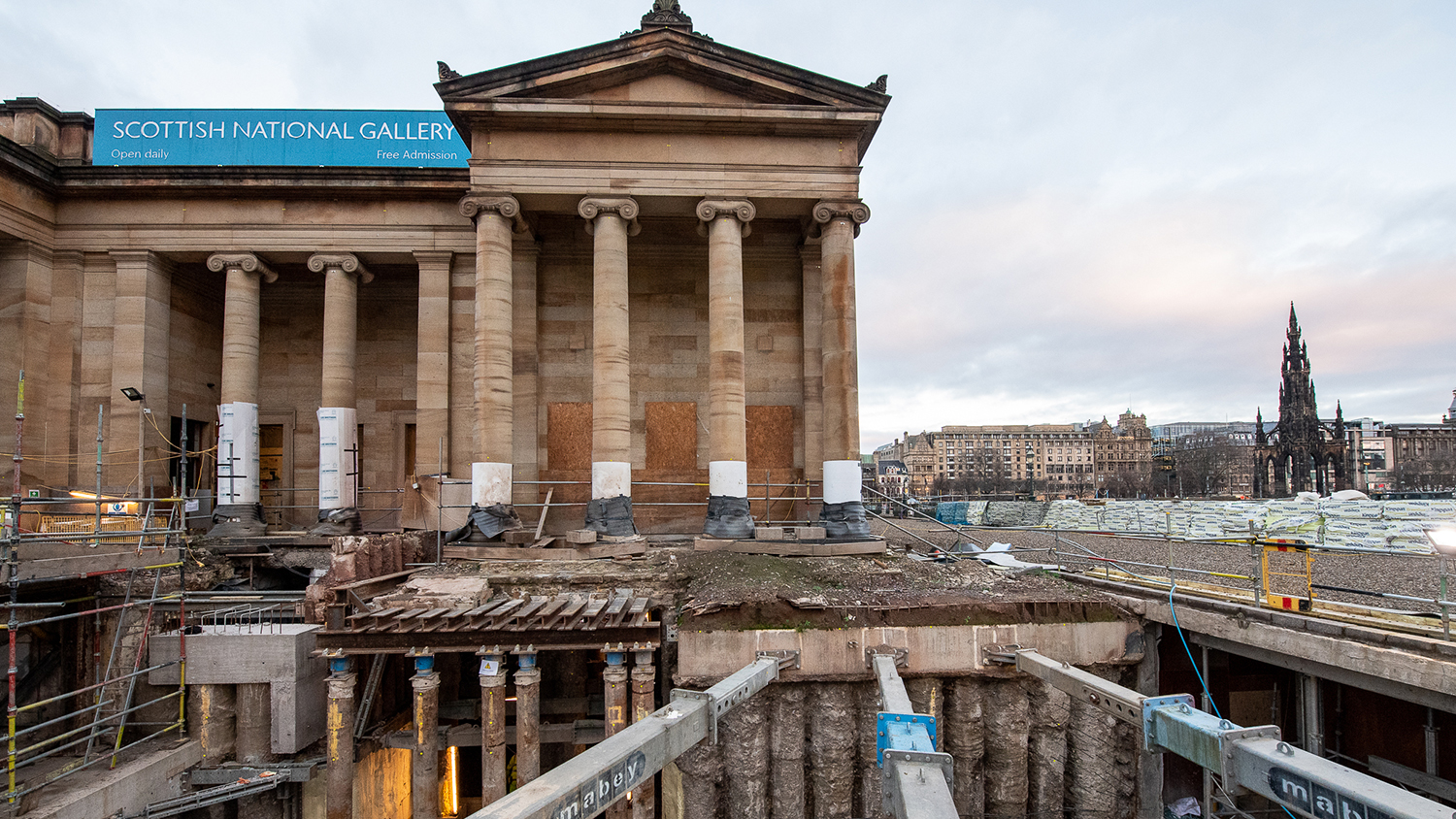
Sitting in a World Heritage Site in the heart of Edinburgh, adjacent to Princes Street Gardens, the Scottish National Gallery (SNG) is A-listed and one of the most visited tourist destinations in the city.
Recently, while up to 4,500 tourists visited the galleries daily, the Tilbury Douglas team was tunnelling, contiguous piling, hydraulic jacking, mini piling, deconstructing and soil nailing, making the safety of the building and the public a primary concern. And, in what has been described as one of the most complex engineering projects undertaken in a heritage building in Scotland, being located above railway tunnels only added to the challenge.
Delivering our client’s vision
The outcome has transformed the building to provide world-class facilities for the innovative display of the Scottish Art Collection. The main objectives were to increase the physical display space, improve circulation areas, entrances and amenities, and enhance the general flow and comfort of visitors. Access is now available to the Scottish Art Collection directly from the gardens.
The project manager was Stuart Burgess, and regional director Barry O’Hagan FCIOB was heavily involved in the latter half of the project. Our works included extensive remodelling of the embankments and constructing new sandstone steps and paths, and soft landscaping. Over an eight-week period, we moved over 1,200 HGVs across the Mound Precinct – one of the busiest live pedestrian areas of Edinburgh.

The key project vision of improved circulation within the gallery could not have been realised without creating a tunnel under the South Portico. Our team developed bespoke temporary works solutions that allowed the 6m deep excavation of the link tunnel directly under the listed porticos to progress safely while evidencing that movement, vibration and masonry strain did not damage the historic fabric.
Transfer from temporary to permanent works
Needle beams were installed by drilling horizontal cores through the 1850s foundations before pressure grouting. Bored piles were installed to support the vertical load of the structure and retain the adjacent ground under large surcharge loads from the listed portico facade.
Hydraulic jacks were used to provide a safe and controlled load transfer between temporary and permanent works. By modelling thousands of points of data, we were able to quickly predict differential movements or strains. Low vibration demolition techniques recognised the sensitivity of the building. The complex tunnelling excavation works were successfully completed with no adverse movement.

To protect the priceless exhibits, we worked with specialist partners to develop a dust extract scheme which utilised proprietary equipment to comply with exacting criteria agreed with the gallery’s advisers.
Work included rebuilding facades to improve the visitors’ experience. The new elevation to Princes Street Gardens East improves views from and towards the galleries and emulates a solid, traditional masonry wall rather than a veneer of cladding. External areas, including the Spanish War memorial and the iconic Playfair Walkway, both listed, have been restored using materials sympathetic to the history of the building.
Collaborating with stakeholders
The location and nature of the works demanded proactive collaboration with a large number of client bodies and stakeholders. These included City of Edinburgh Council and the organisers of the Winter Festival and the Fringe Festival, Network Rail – whose tunnels leading to Waverley Station are located immediately below – and thousands of runners taking part in the Edinburgh Marathon who ran through our site.










